Home » Archives for November 2013
Download
Popular Posts
-
Gibboni and the Gibbon: At Stereo Exchange’s annual Spring High-End Audio Show, Roger Gibboni (left) of Rogers High Fidelity debu...
-
Hey, we were in earthquake country, the land from which Carole King may have received inspiration to write, "I Feel the Earth Move...
-
A reader once noted that I tend to stick with the same reference gear longer than most reviewers. In addition to Audience's Au24e i...
-
John Atkinson and Stephen Mejias were unable to attend the Munich High End Show this year, so the call went out to the editors of Ste...
-
The name sounds perfect . It fits neatly next to those of Messrs. Leak, Sugden, Walker , Grant, Lumley, and others of Britain's...
-
If it's rare to go to an audio show and hear most of a company's products set up properly in multiple rooms, it's rarer sti...
-
One of the most striking aspects of high-end audio is that you can never take any component for granted. Most of the radical change in ...
-
Today, Sony announced an end to production on all MiniDisc players. In a few years, MiniDisc production will cease as well. I know w...
-
The Enigmacoustics company from Irvine in California has become renowned for the self-energized, horn-loaded Sopranino electrostatic su...
-
With the introduction of Audio Alchemy's Digital Transmission Interface (DTI) more than three years ago, the company created an ent...
Market information
Blog Archive
-
▼
2013
(510)
-
▼
November
(12)
- Recording of December 2013: The Grateful Dead's Or...
- Death to the Loudness Wars?
- The Everything is New Project
- Swans Speaker Systems Baton
- PSB Imagine T2 Tower loudspeaker
- Constellation Audio Performance Centaur Mono monob...
- Introducing Audio Element of Pasadena
- TAVES 2013 Report Part 3
- TAVES 2013 Report Part 2
- TAVES 2013 Report Part 1
- Sonus Faber Venere 2.5 loudspeaker
- Solo Piano: Marc Cary and Matthew Shipp
-
▼
November
(12)
Recording of December 2013: The Grateful Dead's Original 13 Studio Albums
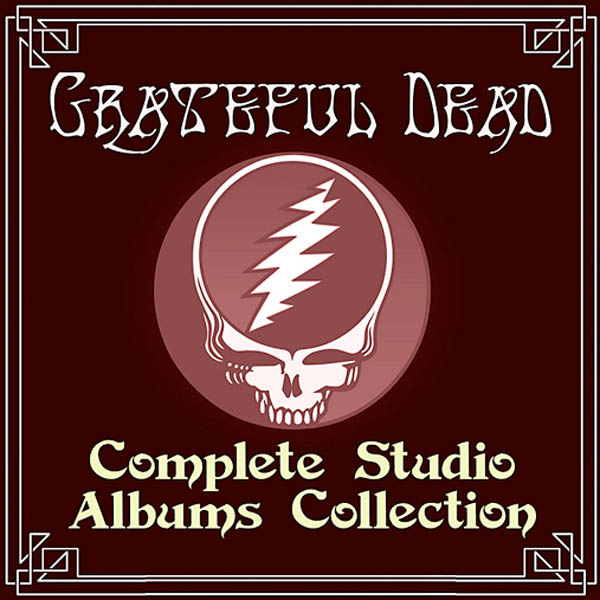
Grateful Dead Productions/HDtracks Hi-Rez Downloads, 24-bit/96kHz or 24-bit/192kHz, 2013. David Glasser, remastering eng.
Perfomance ****½
Sonics **
Deadlines and the Dead don't mix. Let me explain . . .
Back when I was a cub reporter, green as ivy, I was, in retrospect, suckered into volunteering to review a Grateful Dead concert. I dutifully drove to the venue for the 8pm show, abstained from intoxicating substances, and was on track—until I realized that, after two hours, the band was still on just the third song. Jerry was deep into an epic, 2000-bar solo that was gaining rather than losing momentum. In Deadspeak, it was one of those nights. A dash to a pay phone (a pay what?) triggered a full-blown anxiety attack as my crew-cut, old-school editor confirmed that, no matter what the hell this band was doing onstage, I had to be in the newsroom, finishing my review, by 11pm. Just then, my watch struck half-past ten.
This story did not end happily. From that point on, I've had my issues with the live Dead experience (though the glorious Dick's Picks series has softened that a lot). The band's studio recordings are another matter entirely.
Much as I've kvetched about long guitar solos over the years, the Dead's blend of Americana was inimitable—a word I do not use lightly. Now, for the first time, their 13 studio albums have been remastered for download by the band and are available as 24-bit/96kHz or 24/192 files via HDtracks.com in a variety of formats, including FLAC, ALAC, AIFF, and WAV. The albums covered are from Grateful Dead (1967) through Built to Last (1989). The band's first three live albums are not included.
The only catch: For the moment, you can't buy individual albums—you must download the entire catalog, for either $199.98 (24/96) or $249.98 (24/192). I downloaded a 24/192 ALAC version to my work computer over a Metro Ethernet connection at 10MB/second. The final file size was 17.6GB, and it took about nine hours. Neither liner notes nor cover art are available.
I listened to the classics: American Beauty, Workingman's Dead, and then In the Dark. The new remasters, while not the equal of the original vinyl pressings, have more presence and sharper detail than the most recent CD reissues found in the boxed sets The Golden Road (2001) and Beyond Description (2004). The dynamic range is wider, the soundstage is more spacious, and, like the 2009 remastering of the Beatles' catalog, there's a new, lively intensity.
These versions were remastered by David Glasser, at Airshow Mastering in Boulder, Colorado, using an Ampex ATR with the Plangent speed stabilization process to a Prism ADA-8XR A/D converter into a Sonic Studio soundBlade digital audio workstation (DAW). Airshow's monitor speakers are Dunlavy SC-Vs driven by Ayre Acoustics amps. Equalization was done with either a solid-state PrismSound Maselac MEA-2 or API 5500, or a tubed Pultec EQM-1A3. A Fairman TMC compressor was used sparingly.
Glasser knew the gravitas of the project from the outset. "Yeah, it was mine to screw up," he said recently from Boulder, "and I was really, really careful, and cognizant that this might be the last time that these tapes are released commercially. When I put [the tape of] Workingman's Dead up on the machine and pushed Play, and 'Uncle John's Band' came out of the speakers, I cried. It was that moving."
Glasser has worked on a number of Dead projects, including The Grateful Dead Movie, the Sunshine Daydream boxed set, and Europe '72: The Complete Recordings. He says that for the new remasterings he used no peak limiting, and only a little compression, just as a tone shaper. He came away from the project a big fan of the Plangent processing software.
"It's basically a way of eliminating all the detrimental mechanical effects of the tape machine by using the latent bias signal that's still there on the tape, using that as a reference to speed-correct the tape. It requires some special analysis equipment, some wide-bandwidth heads and electronics, but I'm really sold on that process. Even tapes that you think sound excellent, you get rid of those little microscopic speed variations, scrape flutter, and it's like peeling more layers off the onion. More detail is revealed. The stereo image has more stability."
It took Glasser two months to complete the project, and he says that, after hearing the 24/192 files, the surviving band members and their management didn't ask for revisions. In most cases, because the sound quality of the original tapes was so high, they were transferred flat, with no additional processing. Only one album needed a bit of work.
"Surprisingly, it was American Beauty. There must have been some EQ done at the mastering stage, when they cut the LPs, and it was mostly in the low end, to shape that a little bit. But it wasn't difficult to reverse. I think that was the most that was done for any of the LP releases."
Overall, this is a monumental project for HDtracks that should have Deadheads swooning. Stay tuned for these 13 albums to be made available for individual download.—Robert Baird
Source : stereophile[dot]com
Death to the Loudness Wars?
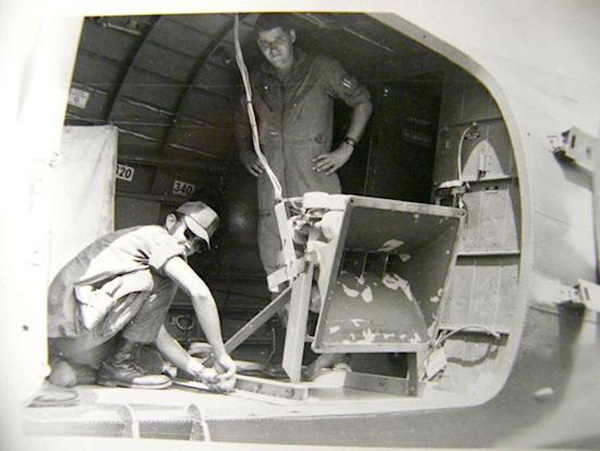
Photo: The Quietus
Over at The Quietus, Nick Southall speaks with mastering engineer Bob Katz about how iTunes Radio may soon put an end to The Loudness Wars. I direct your attention to the article partly because it's a good read and partly because, in hi-fi circles, we tend to think that young people don't care enough about sound quality; this article is a small bit of proof that there are in fact young people who know how to listen. Nick Southall, clearly as obsessed with music and sound as anyone, is two years younger than me. (And, in hi-fi years, I'm a child.)
Here's an especially good bit from Southall's article, Bob Katz speaking:
I just see a gradual opening up of sound quality with new releases, for the better, as soon as producers become aware that iTunes Radio is ‘the great leveler.' It took us 33 years after the invention of the Compact Disc to arrive at a very fucked up point. I think it will only take us five years to return back to sanity, now that iTunes Radio points the way of the future.
For more Southall, click here.
Source : stereophile[dot]com
The Everything is New Project
The Light of Love Children's Home in Tuni, Andhra Pradesh, India is a refuge for orphaned children—children of parents with HIV, parents who committed suicide, or who were murdered for their property, amongst other calamities. In The Everything is New Project, Scotland-based arts collective Transgressive North and charity organization Scottish Love in Action have developed three albums of music around recordings of these children as the Light of Love Children's Choir.
Transgressive North invited artists to use the choir recordings for samples within their own work. They were also challenged to make something "the kids would like." These tracks will be released on a 29-track double album titled Boats. Artists include Four Tet, Gang Gang Dance, Deerhoof, Califone, and Julian Lynch. The musicians and label hope to give these underprivileged children a sense of empowerment by including their voices in the work.
In addition, the Sun Choir EP is a product of another subset of artists, called Marram, working around these children's choir recordings. Artists in Marram include Jarvis Cocker, doseone (Anticon), Owen Pallett (Final Fantasy, Arcade Fire), and White Hinterland. Lyrics are penned by Scottish writers and poets such as Irvine Welsh, Alexander McCall Smith, Valerie Gillies, and Tom Leonard. Both Boats and Sun Choir will be available on January 20th, 2014. All proceeds will go to Scottish Love in Action "which feeds, cloths, houses, educates and provides medical care for over 500 children by funding the Light of Love Home and School in southeast India."
On Marram's "With Us Instead" featuring Owen Pallat, one hears the contemplative melodies of Marillion contrasted with psy-trance explosions of the Afro-Celt Sound System. Frenetic rhythmic structures similar to those found on Dan Deacon's America chatter like frozen teeth. All-in-all, it's pretty good. The kids would be proud.
Source : stereophile[dot]com
Swans Speaker Systems Baton
 As a privileged reviewer-type person, I was sent the souped-up, all-rosewood, bi-wirable version that sells for $2905/pair. They're quite handsome and very solidly built, weighing in at a respectable 50 lbs each. At $2275–$2905/pair, the Baton is Swans' most affordable speaker, and reportedly employs many of the technical refinements of their larger, more costly models.
As a privileged reviewer-type person, I was sent the souped-up, all-rosewood, bi-wirable version that sells for $2905/pair. They're quite handsome and very solidly built, weighing in at a respectable 50 lbs each. At $2275–$2905/pair, the Baton is Swans' most affordable speaker, and reportedly employs many of the technical refinements of their larger, more costly models. The Baton uses the tried-and-true two-way dynamic design, with a 7" coated-paper woofer and a 1" fabric-dome tweeter. The tweeter comes with a little Marigo dot stuck to its center to shape its response. It's not a physically easy task for a woofer to reproduce (well) all the frequencies from about 60Hz up to about 2 or 3kHz. One that succeeds is a nice find, though, because the sound has a nice coherence to it when most of the music is coming from the same driver. But don't take my word for it—just look how many zillions of two-way speakers there are out there.
The cabinets of these speakers are quite dead, meaning they shouldn't add too much garbage to the sound coming from the drivers. The walls are 1" thick and braced on the inside, and the edges of the cabinet are rounded to reduce detrimental diffraction effects. In a nice touch, Swans puts the crossover inside a sub-compartment to isolate the components from internal sound waves. The drivers are sonically matched in pairs at the factory prior to assembly, after which the speakers are submitted to lengthy break-in calisthenics. After break-in, the speakers are tested again. Then they're shipped out, and you get to test 'em.
Sound
When I set up the Batons in the "minimized room modes" position that worked well with my B&W 804s, their bass was a little boomy. I realized that, since these speakers are rear-ported, I'd have to check all the wall distances to the ports, as well as to the woofers. This meant twice as much work and trickier problem-solving than was required by the Thiel CS1.5 and Unity Audio Signature Mk.3 speakers that I also review this month, whose woofers, ports, and passive units were lined up more or less vertically. Not to worry, though—an inch this way, a couple inches that way, and all the numbers worked out oh-taay.
I found the Batons sounded best tilted way back. It didn't sound like there was driver time coherence until I got my eyes on the axis of the lower grille anchors, below the woofer. (Be careful: if you tilt them back much more than this, they might fall over.) With the amount I used, though, they still seemed to have enough stability. The threaded spikes (included) are nice and large, and have no nuts attached. These spikes were easy to adjust, looked plenty strong enough, and gave lots of maneuvering height to reach a good tilt angle. I wish more speakers had spikes like these.
After a bit more listening it became apparent that the Batons should be toed-in so that they point directly at the listening position. This configuration gave the most detail, and the Batons needed all the detail they could get. The sound was less involving if they were angled away from me at all. Also, I preferred listening with the little grilles removed. (I've found that grilles in general interfere too much with the top octave.)
 Steve Tibbetts' recent masterpiece The Fall of Us All (ECM 1527), is a wonderfully weird album with one of the most diverse collections of instruments I've heard: rock'n'roll guitars, New Age-y synthesizers, and ethnic Asian instruments and drums. Tibbetts' gift for composition really turns me on, and his creative and masterful use of his analog studio doesn't hurt, either. Through the Swans, I heard less detail than with my reference B&Ws. The Swans seemed to give everything a warm, wooden quality, which helped the hand drums to sound quite realistic, but metallic instruments came out sounding a bit muffled. The lower-midrange detail was actually fairly good, and the bass was fairly tight, but there appeared to be information missing from the upper mids on up.
Steve Tibbetts' recent masterpiece The Fall of Us All (ECM 1527), is a wonderfully weird album with one of the most diverse collections of instruments I've heard: rock'n'roll guitars, New Age-y synthesizers, and ethnic Asian instruments and drums. Tibbetts' gift for composition really turns me on, and his creative and masterful use of his analog studio doesn't hurt, either. Through the Swans, I heard less detail than with my reference B&Ws. The Swans seemed to give everything a warm, wooden quality, which helped the hand drums to sound quite realistic, but metallic instruments came out sounding a bit muffled. The lower-midrange detail was actually fairly good, and the bass was fairly tight, but there appeared to be information missing from the upper mids on up.
The Batons' bass sounded less extended than that of the Thiels or B&Ws. They went down almost as low, but their midbass was a bit recessed. With Dorian Records' Sampler II (DOR-90002), I had the impression that the bass was slightly too lightweight. Though in general the Batons' bass had good speed, with little overhang, their upper bass somewhat obscured the midbass, making the bass viols and organ pedals difficult to pick out. The bass coloration overall is not that large; I'm just pointing out minor flaws.
I noticed some colorations in the midrange. Some of these were admittedly due to the room, but others were present regardless of where I placed the speakers. I'm not going to try to name particular frequencies; I'll just say there were peaks and dips slightly bigger than expected in speakers of this price. These colorations, in addition to the lack of detail overall, made me want to stop listening to classical music on the Batons. The instrumental timbres were changed enough to detract from the level of realism that normally excites me with well-recorded acoustic music. I reached for rock'n'roll instead.
Now for the good news. I put on Toto's Isolation (Columbia CK 38962) and immediately started to enjoy myself. This ain't no cave, and my name ain't Bruce Wayne, so out with Bat-on, and in with Rock-On! These speakers worked wonders with this recording. Much of the overbright balance, recording artifacts, and excessive cymbals were mercifully absent. Through the "Rock-Ons," this recording sounded more natural than usual, thanks to the speaker's slightly soft treble and rolled-off top octave. This is not high fidelity. I think I'd call this Fidelity Band-Aid. I also think I like it on some recordings, even though I know better.
Moving on to Journey's Greatest Hits (Columbia CK 44493), I wrote, "Now I'm on to something here. Steve Perry's voice has a warm, natural-sounding roundness, but I've never heard this recording sound this good before. The electric guitars sound particularly good." I had never heard "Don't Stop Believin' " sound as good as it did on the Swans "Rock-Ons," and it made me wonder if the speakers the recording engineer had used had a similar balance. I was having a lot of fun with this synergistic match between recording and speaker. I hadn't known that it was possible to strap a pair of speakers on to the end of a transparent, neutral playback system, and have them systematically transform bright, gimmicked recordings into more natural-sounding music.
The main drawback left with the Journey was the speakers' tendency to reduce ambience, even though there isn't much on these recordings. What would normally sound like a medium-sized recording studio sounded a bit smaller and more heavily damped. The left/right image placement was well-defined, and the images themselves gave a fairly good illusion of being in the room with me, but they were more atmospheric than well-fleshed-out. Everything sounded a little softer than real, and the depth was foreshortened a little.
As my Zen amps have a moderately high output impedance of about 0.8 ohm, I wanted to try the Swans with a more characteristic transistor amplifier. I hooked up the NAD 2100X, which has an output impedance less than 0.1 ohm, and the treble sounded a little improved. The difference was not that large, but it was definitely a change for the better. Later, I performed the opposite experiment, connecting 2.2 ohm resistors in series with the Zen and the speakers. This simulates an amplifier impedance of 3 ohms, such that you might find in a single-ended tube design. The treble sounded worse with this setup. I definitely recommend using amplifiers with low output impedances with the Swans. I didn't use the NAD with them all the time, however, because it couldn't compete with the Zen in terms of sound quality. (It's a good amp for the money, though.)
The renamed "Rock-Ons" performed admirably in the Greenberg Memorial Loudness Test. (As Corey Greenberg doesn't write for Stereophile anymore, I figured we should name something after him.) I played some Megadeath and some Warrior Soul, and turned the volume up beyond the point where I had to put cotton balls in my ears to be comfortable. The Swans uttered nary a complaint. No woofer bottoming out. No tweeter bits on the floor. Not even any kind of strain or excessive distortion. This refusal to expire (or even perspire) is impressive for a pair of 7" two-ways, and convenient considering how loudly their preferred program material wants to be played. So bring on your poorly-recorded-yet-lots-of-fun Rap, Heavy Metal, Alternative, Industrial Dance, and Disco, and turn it up.
Conclusions
I wanted to like the Swans Baton a lot. It's so well made and looks so good, you just automatically expect great things from it. But I can't recommend the Baton for music-lovers in general. Their sound just did not offer a clear enough view into the recording—or, by extension, into the original performance—for them to be competitive at this price. Their lack of treble detail, reduced ambience, and midrange colorations take them out of contention for neutral transducer honors (footnote 1).
Nevertheless, people who have very specialized collections of nothing but over-bright, over-processed rock and pop music might want to give the Batons a listen. Why should you buy the relatively wimpy Swans as your dedicated rockin' speakers, when you could have 15" woofers? Because, silly, those monstrosities are usually crossed-over too high in frequency, so that they're dragging their slow 15" butts all over the midrange. Well, not in my midrange you don't! Kickdrum, guitars, and voices all sound way better when most of their sound comes from a single, fast woofer. And remember, swans may look pretty, but they can attack if provoked. Rock On!
Footnote 1: I think Swans gave the Baton the wrong name. Can you visualize James Levine waving one of these things as the first and second cellists move to the rear of the orchestra in the interest of saving their lives? On the other hand, I could totally see Gene Simmons swinging one around his head at a KISS concert, while he spits blood and sings "What is my charisma...is it my body or my brain?" The nice "burnt wood" patterns on the speaker would go well with Gene's dragon-face makeup, too. If you were a sly little reader, you might suspect that I had other reasons to rename this speaker. You might be right.— Muse Kastanovich
Article Continues: Specifications »
| | |||||||||||||
Source : stereophile[dot]com
PSB Imagine T2 Tower loudspeaker

But what about speakers that sound good at audio shows? Well, a speaker can't sound better than its inherent mechanical/electrical characteristics allow, but the rest of the system may have been hand-picked to be the most synergistic possible, and include ultra-expensive components. The setup may have been tweaked to a fare-thee-well, and the demo material chosen to show off the speaker's positive characteristics and minimize its deficiencies. Based on listening under these conditions, you may be sufficiently impressed to buy the speaker, then disappointed when you can't replicate in your home what you heard at the show.
And yet, while I appreciate these caveats, I, like most people, make judgments of speaker sound quality based on my impressions at the Consumer Electronics Show and regional audio shows. In fact, I choose most of the products I review based on what I've heard at such events. If I don't care for the way a speaker sounds there, I'm unlikely to review it, even though I recognize that its poor showing may have been due to one or more of the reasons listed above. I would rather not take a chance on spending months listening to a speaker whose sound I don't like, and instead select a speaker that impressed me positively. I believe that this sort of selection bias explains why Stereophile reviews tend to be positive. Stereophile's bias is to mostly seek out equipment that its writers think a) is very good, and that b) its readers will enjoy.
I first heard PSB Speakers' Imagine T2 Tower at the 2012 CES. What I heard was good enough that I wanted to hear more.
Description and Design
In designing its speakers, PSB uses the anechoic chamber and measurement facilities of Canada's National Research Council (NRC), in Ottawa. PSB designer Paul Barton is very much a "hands-on" designer; he told me that last year he spent five months in China, supervising the manufacturing of PSB speakers.
The Imagine T2 Tower is a lovely-looking speaker, well proportioned and with the sort of finish that, just a few years ago, would have been the exclusive purview of speakers made in Italy by master craftsmen. In fact, the T2 is made in China, using advanced technology as well as individual attention to detail. The cabinet is teardrop-shaped in cross section, which is more visually pleasing than a plain rectangular box, and has the acoustical advantage of having no parallel internal walls. (A number of speaker manufacturers, including B&W and Wharfedale, have adopted this sort of cabinet shape.) The cabinet panels are formed of seven layers of MDF, pressed into shape, while the front baffle is made of 2"-thick MDF. Considerable effort is made to match the grain of the wood veneers, to create a "cathedral" appearance.

The Imagine T2 Tower evinces similarities to PSB's Synchrony One, reviewed by John Atkinson in the April 2008 issue, and might even be described as a scaled-down version of that model, much of whose technology it shares. However, all the drive-units were developed specifically for the Imagine T2, whose crossover takes into account those drivers' characteristics, the distances between them on the baffle, and the height of each driver from the floor, to minimize interference between direct sound and the floor bounce.
The Imagine T2 Tower's driver complement comprises: a 1" titanium-dome tweeter with a neodymium magnet, similar but not identical to the tweeter used in the Synchrony One; above that, a 4" clay/ceramic-filled, polypropylene-cone midrange unit; and below it, three 5¼", clay/ceramic-filled polypropylene-cone woofers. Each woofer has a distortion-reducing phase plug of aluminum, as in the Synchrony One, as well as its own internal chamber and rear-firing port. Compared to speakers from other manufacturers, an unusual aspect of the T2 Tower's design is what Barton calls a "transitional" crossover in which each woofer is crossed over to the midrange at a different frequency: the one closest to the floor at the lowest frequency, and each of the other two at an incrementally higher frequency (but see "Measurements" sidebar—Ed.). As well as each woofer having its own port, PSB also supplies two rubber plugs, to optionally block the outputs of the two lower ports.
Setup
The Imagine T2 Towers seemed quite happy being plopped down in the general area where speakers normally sit in my listening room, but benefited from my tweakings of the distances between them, and from each speaker to the wall behind it. In their final positions, the speakers were aimed so that their tweeter axes passed just outside my ears when I sat in the listening position, forming an angle of about 60°. I then installed the supplied spikes, which somewhat tightened the bass and increased the specificity of imaging.
As mentioned earlier, the Imagine T2 Tower is supplied with plugs that permit selective blocking of the woofer ports. I tried the speakers first with no plugs (corresponding to a fully ported design), then with the lowest port plugged, and then with plugs in the two lowest ports. (I didn't try other combinations.) My preference, when listening to material that had a good amount of mid- and low bass, was for the two lowest ports being plugged. The bass in this configuration was tighter, and subjectively more extended than with no plugs—even the midrange seemed cleaner.
The Imagine T2 Tower is provided with a curved metal grille that's attached to the speaker at several points, thus reducing possibility of the grille rattling. I listened to the speakers with the grilles on and off, and was surprised by the degree of veiling the grilles introduced. I strongly recommend leaving them off. They're easy to attach and detach, for those occasions when you're entertaining small children or adults who may be tempted to poke the drivers.
I had three amplifiers on hand to try with the Imagine T2 Towers: my McIntosh Labs MC275LE (75Wpc, tubed, paired with the Convergent Audio Technology SL-1 Renaissance preamp); a Simaudio Moon Evolution 860A (200Wpc, solid-state, paired with Simaudio's Moon Evolution 740P preamp); and a PrimaLuna ProLogue Premier integrated amp (40Wpc, tubed). My description of the overall sound of the Imagine T2 Tower represents a kind of "averaging" of its performance with these three amps, with differences as noted.
Unlike the Wharfedale Jade 7, which I reviewed in the May 2013 issue, and which had to be played for about 150 hours before it sounded its best, the Imagine T2 Towers seemed to require no break-in at all: the only changes in their sound during the review period resulted from tweakings of their positions. (The review samples had gone through the measurement regimen at the NRC, which may have served as break-in.) They did benefit from a good warm-up, though: their sound was more "relaxed" after about a half-hour's play.
Sound
In his book The Audio Glossary (extracted here), Stereophile founder J. Gordon Holt defines accuracy as "(1) The degree to which the output signal from an active device is perceived as replicating all the sonic qualities of its input signal, and (2) The ultimate objective of an ideal system, which everyone claims to want but nobody likes when he hears it." Gordon's definition of euphonic is "Pleasing to the ear. In audio, 'euphonic' has a connotation of exaggerated sweetness rather than literal accuracy."
Article Continues: Page 2 »
| | |||||||||||||
Source : stereophile[dot]com
Constellation Audio Performance Centaur Mono monoblock power amplifier
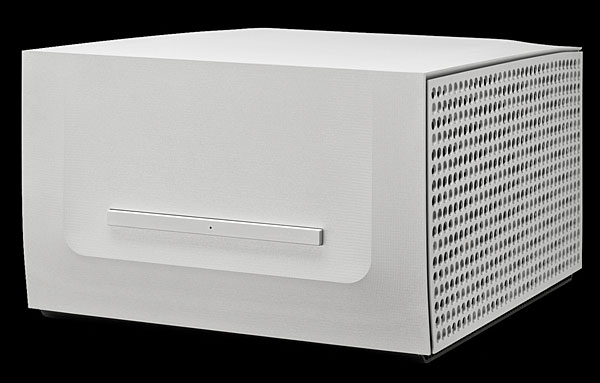
Constellation's instigators-in-chief are David Payes and Murali Murugasu, the Australian duo whose first venture into high-performance audio manufacturing was Continuum Audio Labs, makers of the Caliburn and Constellation turntables, both the work of conceptualizer-in-chief Mark Doehmann and an illustrious team of metallurgists, motion-control experts, bearing specialists, and all the other technicians and craftspeople required to produce state-of-the art turntables.
Though Doehmann is no longer with the company, Continuum soldiers on—as does my Caliburn, having never once malfunctioned in seven years of abuse from yours truly. Payes and Murugasu say they have a new turntable in the works, but in 2008 they decided to add a complete line of electronics to their portfolio, made by a new, independent company. "The idea," Payes told me at CES 2010, "was to develop an electronics company on the same basis as Continuum: find the best designers we could find, and basically motivate and control the design team—and fund it, obviously."
Setting aside the drama of bankrolling an expensive audio startup in the face of world economic collapse, Payes and Murugasu found an anonymous investor who is identified on the Constellation website as "Guru/Investor Ignacio Incognito"—almost as good a handle as "Carlos Danger." When they began searching for a project coordinator, Murugasu, with more than a decade's worth of experience in audio importing and distribution, primarily in the upper echelons, knew what he wanted. They began in Australia, but the search ended in the US with Peter Madnick, who had long been eager to work free of price constraints.
In Madnick, Murugasu and Payes found not only an industry veteran with decades' worth of experience and consumer name recognition, thanks to his association with the modestly priced, highly innovative products from Audio Alchemy, but also one who owned a factory, in Newbury Park, California, with proven capabilities in manufacturing high-performance audio gear. Madnick, who assumed the title of vice president of engineering, assembled a dream team (Google them if you're unfamiliar) that includes, among others, the legendary electronics designer John Curl, the equally legendary James Bongiorno (who has since died) and Bascom King, Demian Martin (Entech, Monster), and the gifted polymath industrial designer Alex Rasmussen, who, aside from being incredibly talented, is one damn handsome man—an annoying combination, if you ask me.
Through the Neal Feay Company, of which he's president—the third generation of his family to hold that title—Rasmussen has done the industrial design for dozens of audio products you've either admiringly ogled or run your hands over—as you inevitably will when you meet, in the flesh, Constellation Audio's exquisite-looking and -feeling Performance Centaur Mono monoblock power amplifier.
Performance Centaur Mono vs Reference Hercules
Constellation's cost-no-object, 275-lb, 1100W (into 8 ohms) Reference Hercules monoblock is priced in Larry Ellison territory at $140,000/pair. The 103-lb Performance Centaur Mono—a single-chassis stereo Centaur is also available—costs a more "affordable" $54,000/pair, though it outputs "only" 500W into 8 ohms, which should be enough to drive most any loudspeaker in a room of any size.
Yet, Peter Madnick assured me, the Centaur's amplifier circuit—and the circuit boards themselves—are identical to those in the Hercules. The biggest difference is that the Hercules uses the highest-quality "through hole" parts, hand-mounted, while the Centaur's boards are stuffed with the best available surface-mount-technology components and soldered by machine.

Madnick freely admitted that while the amps' circuits are identical and their sounds similar, the Hercules produces a somewhat more refined sound—as well it should, for almost three times the price and twice the power output. But clearly, the Performance Centaur Mono is the sweet spot of the Constellation line, in terms of quality per dollar which made reviewing it, rather than the Hercules, more useful to this magazine's readers.
Particulars
A design team, led by Bascom King and Peter Madnick, with some front-end input from John Curl and power-supply contributions from James Bongiorno, began by designing a single-ended, 125W, MOSFET-based amplifier that met everyone's specification requirements and produced the requisite sonic glory. That module is the Performance Centaur Mono's basic building block, multiples of which are combined to produce the amp's total claimed output of 500W. The Centaur's sound, Constellation claims, is identical to that of the single module, which begs the question: Why not make and sell that module? After all, 125W is more than enough power for many efficient speakers, and the price could be as attractive as the casework. Maybe it's on the way . . .
The Centaur is a balanced design. So how, you ask, can a single-ended amplifier also be a fully balanced amp? Constellation calls its proprietary topology a Balanced Bridge design.
Instead of the usual push-pull arrangement of N-type output transistors for one half of the waveform and P-type devices for the other half (each of which has somewhat different performance characteristics), within each Centaur Mono are a pair of carefully matched "floating" (ie, not referenced to ground) amplifiers, both using only N-channel MOSFETs. (There are eight transistors on each half-bridge, for a total of 16.) One amplifier is fed the balanced signal's negative phase, the other the positive. The speaker load directly connects the two amplifiers. The unique arrangement is similar but not identical to bridgeable stereo amplifiers that can be configured to produce more than double the power when used as a monoblock. A 1600VA custom-wound toroidal transformer and large storage capacitors ensure that the Centaur never runs out of juice.
The Centaur Mono uniquely includes three input choices: single-ended RCA, balanced XLR, and balanced Direct XLR, the last bypassing the input gain stage and usable only with a Constellation preamplifier. The standard balanced input incorporates a line-stage gain module that uses servo circuits and hand-selected, ultra-low-noise FETs claimed to deliver to the amp stage the same perfectly balanced signal as that delivered by Constellation's own preamplifiers.
The Physical Plant
Despite the Performance Centaur Mono's costing far less than the Reference Hercules, Constellation has spared no expense on its build quality. The sculpted, sloped front panel of pebbly, opaque aluminum, designed and built to the same high standards as the Hercules's faceplate, makes the Centaur among the most subtly striking-looking big amps I've ever seen. It's as unobtrusively handsome as, say, Dan D'Agostino Audio's Momentum monoblock ($55,000/pair; see my February 2013 review) is obtrusively so. Very different but equal "wow factors," to be sure.
In short, you're paying plenty for looks. But these are looks that keep on giving, especially when the Wife Acceptance Factor kicks in—the Centaur's sleek, cool lines might spell the difference between "Not in my house" and "Okay."
Article Continues: Page 2 »
| | |||||||||||||
Source : stereophile[dot]com
Introducing Audio Element of Pasadena
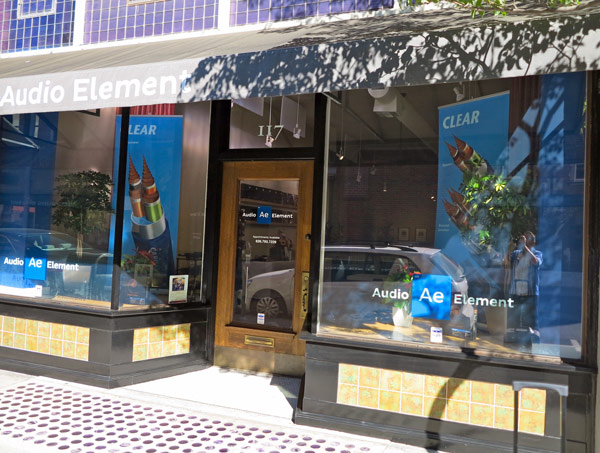
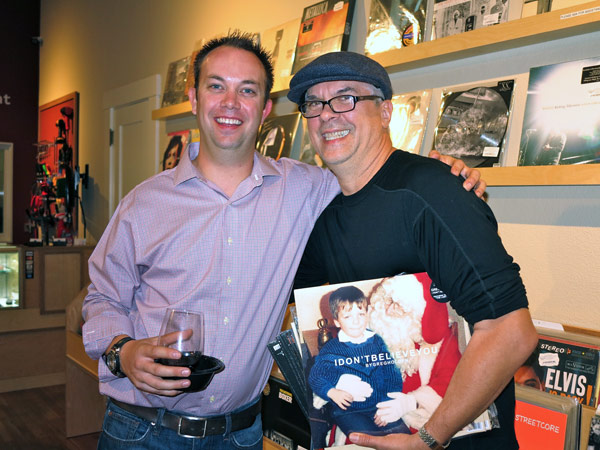
Signaling the start of a new era for high-end dealerships in Southern California, Friday night’s catered “soft” opening for existing clients and Saturday’s six-hour public open house were attended by enough major manufacturers, designers and distributors to have made possible a mini-audio show. On Friday night, for example, I discovered Berdan (left) speaking with Tom Bierry (right), former General Manager at Warner Bros, who now runs an independent label that is signing with Sony Red. Among Saturday’s visitors were Manley Labs’ EveAnna Manley, her mastering engineer husband Dave Collins, and T.H.E. Show head honcho Richard Beers.

Posing for a Saturday morning photograph, Jerron Marchant (Wilson Audio), Joe Wessling (Musical Surroundings, distributor of Musical Surroundings, Clearaudio, Fosgate, Aesthetix, AMG turntables, and Graham tonearms), David Carr (The Sound Organization, distributors of Rega and Quadraspire), Luke Manley (VTL Amplifiers), Raveen Bawa and John Quick (dCS), Jesse Luna (Sumiko, distributors of Sumiko, Sonus faber, Pro-Ject, and REL), Alex Brinkman (Ayre), and Jim White (designer of Aesthetix), joined Berdan and Matthew Payne of Audio Element in taking a deep breath before the day got underway. Absent from the shot, but arriving in time to greet visitors at the unstructured open house was Brian Von Bork (Cardas). Had representatives from Burmester, Transparent, Grado, and Grand Prix Audio been available, all of the store’s brands would have been represented.
Brian Berdan, 34, son of legendary audio retailer Brooks Berdan, has been surrounded by audio for virtually his entire life. During the three years preceding his father’s death in July 2011, when Brian ran Brooks Berdan Ltd. in nearby Monrovia, it became clear that he needed to eventually step out on his own.
“I always had more modern ideas,” Brian told Stereophile during Friday’s evening libations. “While I adhere to my father’s core values—I’m not in this to gouge people—my dad was more of a technical guy, while I’m more of a feeling person. I’ve taken my toys and my sandbox and moved to Pasadena.
“I feel I can sense what a client needs and what can work for them. I watch their body posture when they listen to music, and know what they like and what they don’t like. Then I introduce them to products in stages, as one would offer different kinds of wines, in order to guide them to audio bliss. It’s about the journey, and I’m here to help people enjoy it.”
Brian is especially proud of the fact that he once played Heifetz recordings to a man who knew the great violinist, and managed to bring the potential client to tears. “While I remain a vinyl-head—vinyl remains at the core of the sound I try to produce—it’s somewhat of a romantic attachment,” he acknowledges. “The truth is, digital has gotten so good that I’ve grown to really like it as well.”

The Entrance
At the store’s entrance, Brian and Matthew have positioned “less intimidating, more approachable electronics that people off the street can associate with.” On the left (above), you immediately discover a relatively compact system that mates Rega’s Elicit-R amplifier, Aria phono stage, and RP-8 turntable with the Sonus Faber Venere 2.5 loudspeakers that Kal Rubinson praised in the November issue. I was amazed at the solidity of the bass, as well as how pleasing the overall presentation sounded. Beyond this system was positioned a turntable bar with Clearaudio Performance DC, Pro-Ject Classic, and AMG tables.

At entrance right, I encountered Grado and Pro-Jest headphone displays, allied to a small listening area fronted by Pro-Ject’s Stereo Box, Head Box S, Stream Box DS, Phono Box, Debut Carbon and Essential turntables, and Sonus Faber Venere 2.0 loudspeakers. Next came a wall and bins filled with luscious vinyl, fronted by a listening area that included the dCS Puccini CD/SACD player/U-Clock combo; Aesthetix’s Calypso preamp, Rhea phono stage, and Atlas amplifier; Cardas Clear and Clear Beyond cabling; and Wilson Audio Sasha loudspeakers.
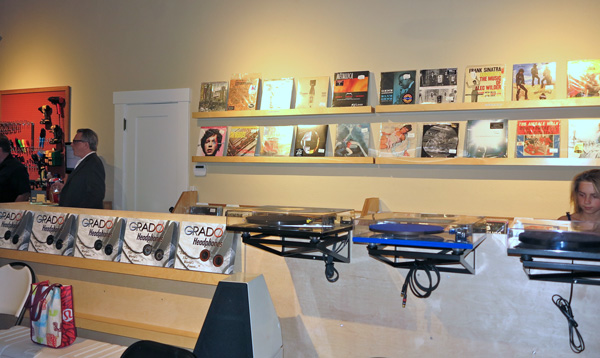
After three more Rega tables, Grand Prix Audio Woodcote and Le Mans racks, a Clearaudio Matrix record cleaning machine, and Wilson Audio Sophia 3 and new Sonus faber Olympica II loudspeakers, I discovered the “Living Room Experience.” Facing a couch array, beneath a video screen whose images were absurdly mismatched with the music played, rested a laptop and Pro-Ject Extension 10 with Blackbird cartridge supplying Ayre’s QB-9 DAC, KX-R20 prototype preamp, and VX-5 amp; VTL’s TP 2.5; and Sonus Faber Elipsa SE loudspeakers, all connected by Cardas Clear cabling.

Given that the system was truly up against the wall, I was amazed at its fabulous spaciousness. I experienced no sense of limitation. Alex Brinkman attributes this in part to Ayre’s 20th Anniversary KX-R20 preamp’s Diamond Output Stage. Expect to hear more about this shiny wonder in our CES 2014 show report, which will appear right after the first units ship.

The Glories of the Inner Sanctum
All this lusciousness led to the beveled glass door that opened, not to Oz, but rather to Audio Element’s main, purpose-built listening room. Brian designed the room’s 9.8 foot ceiling and 16 x 20 floor plan to get as close to the Fibonnaci sequence/Golden Ratio as the suspended wood flooring in the rear of the 100-year old historic building would allow. As attested by the room’s exceptional sound, Brian is a system set-up specialist whom dCS has flown to the UK several times. Most recently, on October 17, he worked on both a factory system set-up for dCS and a dry run for a potential event at the Royal College of Music. This caps seven years of helping manufacturers set up shows, as well as aiding in product development, voicing and evaluation.
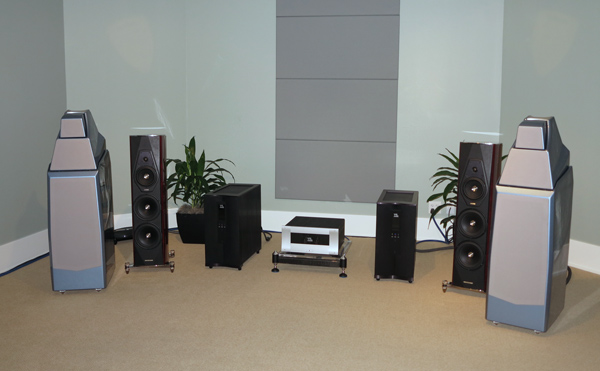
One unique feature of the room is the sliding wood door on the far side that, when opened, noticeably increases soundstage air and depth. We who lament that our rooms are asymmetrical, with openings on one side, may discover that the openings actually work to our ultimate benefit.
It’s a shame that the mere mention of this room’s equipment may cause some readers to complain that Stereophile pays too much attention to the high-priced spread, and cancel their subscriptions to this free site. To such folks I say, get a grip. If you found yourself flown to Southern California with plenty of time to enjoy track after track in a superbly designed room that included dCS’s state-of-the-art Vivaldi transport, DAC, upsampler, and clock stacked on an eye-catching Grand Prix Audio Silverstone rack, and a separate dCS Paganini system (wired with AudioQuest cabling) on a Grand Prix Monaco Modular rack; Grand Prix Audio Monaco turntable with Tri-Planar tonearm and Lyra Skala cartridge; VTL’s TL 7.5 and TP 6.5 preamps and mighty Siegfried monoblocks; Wilson Audio Alexia and Sonus Faber Amati Futura loudspeakers; and lots of Transparent Opus and Cardas Clear cabling, would you spend your afternoon listening to the excellent lower-priced components, or settle into the inner sanctum’s comfortable couch and indulge?
You know what I did. Cellist Antonio Lysy playing Piazzolla, Peter Gabriel sanctifying “Mercy Street,” Shelby Lynne doing a little lovin’, Paul Simon dancing on 25th anniversary diamonds in 24/96, Dead Can Dance sounding fabulous as MoFi vinyl sent them into the labyrinth, Satchmo dreaming a little dream in 24/192, Mendelssohn’s Scottish Symphony on vinyl, Sarah Vaughn sending in the clowns in Red Book… it went on and on. Along the way, we experimented with the settings on the Siegfried, and confirmed that the Vivaldi’s DXD upsampling option surpasses its DSD upsampling in soundstage air and depth. But mostly, we grooved to the music.

Welcome to the fold, Audio Element. You and Brian are poised to make a lot of music lovers very, very happy.
Source : stereophile[dot]com
TAVES 2013 Report Part 3

At the other end of the continuum are speakers that are designed and built from the ground up,, using design principles that, while perhaps not entirely original, represent substantially new application of these principles. This approach is much more rare—and much more costly to implement.
The Muraudio Domain Omni ESL ($48,000/pair), which made its debut at TAVES, is squarely in the latter category. Pictured here with designer Murray Harman, the Domain Omni ESL is handmade in Canada, and is described as "a 360 degree, point-source, omni-directional electrostatic loudspeaker." The electrostatic elements are curved top-to-bottom as well as side-to-side (not just side-to-side, as in the MartinLogan electrostatics). The design features a horizontal dispersion of 360° and a vertical dispersion of 16°. The Domain Omni ESL is a two-way system, with the lower part of the range being handled by two LF drivers powered by a 700W class-D amplifier. The design is nothing if not ambitious, and is the subject of several patents. The sound was promising, with a soundstage that was apparent well away from the central sweat spot, but I had the feeling that the relatively small room did not give these omnidirectional speakers enough breathing room.
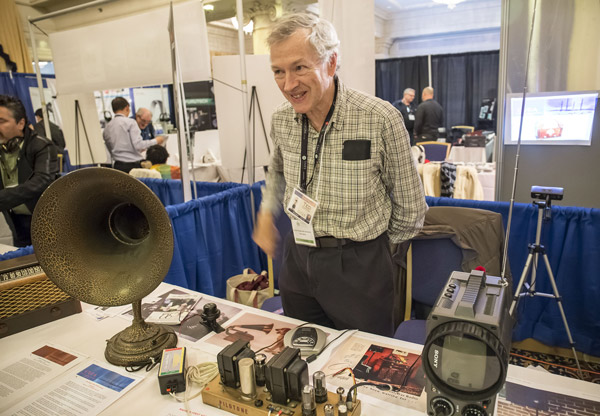
I have a certain fondness for vintage equipment, and was happy to see a representative of the Ontario Vintage Radio Association, Ted Catton (seen in the photo) at TAVES. Of course, the Sony TV set is a bit too modern to be classified as "vintage radio," but I was intrigued by the rotating picture tube. That's what I need when I forget that you shouldn't take a video with the camera turned to the portrait position!

TAVES offered a wide range of seminars, from the "home theater of the future" to "advanced turntable setup," sponsored by Tricell Enterprises and presented by Richard Mak of Tone Audio magazine (seen in the photo). I sat in on the latter for a few minutes, and was interested in Richard Mak noting that tracking-force gauges are notoriously inaccurate, with one costing $250 being one of the worst, and a $15 gauge being considerably better.

Attending a show like TAVES, it's easy to develop a jaded feeling, accepting as normal equipment whose cost seems to exist in another world. Of course, this is part of what shows like this are about: to see what the 1% buys—or, perhaps, what you would buy if you were part of the 1%.
But TAVES is not completely elitist, and if you were interested in more affordable equipment, there was lots to see as well. A system I saw that can be considered affordable by almost any standard is pictured here, with importer Jean-Marie Suard. The components included the ACT B-1.1 speakers ($700/pair), Ex-302 integrated amp (40Wpc, $349), Ex-322 CD player ($349), all designed by BC Acoustique in France and made in China. It would not be difficult to get it for a package price of $1000. And, despite lack of apparent care in the setup, the sound was really not bad.

How was the show? Well, because of competing obligations, I was able to attend TAVES 2013 only on the first day, Friday, which is traditionally a low-attendance day, so I can't say what overall attendance was like. For a Friday, it was about typical. In terms of the number and range of products on display, the show had a great deal to offer attendees. The major importers/distributors seemed to go all out to present their products. If I had the time, I would have welcomed the opportunity to go back and spend more time listening to the music.
The King Edward hotel continued to be an excellent venue: classy, and with rooms that were generally good for demonstrating equipment. This was the third year of TAVES, Suave Kajko and Simon Au having taken over from the Montreal crew of Michel Plante and Sarah Tremblay—and they're doing just fine. As the sign says: See you in 2014.

Source : stereophile[dot]com
TAVES 2013 Report Part 2
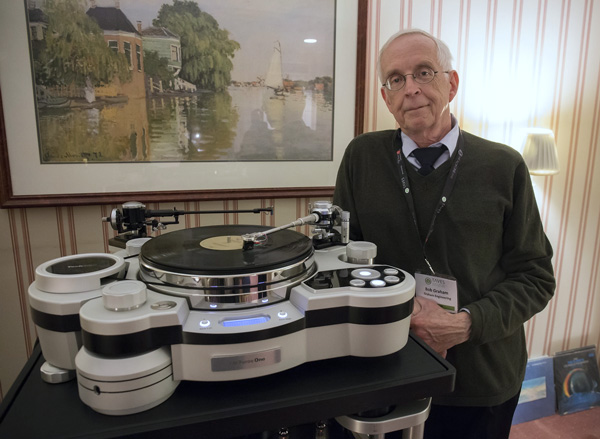

I've always been intrigued by the concept of the air-bearing turntable and linear-tracking arm, and if I were more into playing LPs and wanted a turntable/arm combo that was better than my aging and not-fully-up-to-date Linn, I would probably start by looking at products that follow these design principles. Bergmann has two products in this category which were on demo at TAVES: the $22,000 Sindre the $13,000 Magne. (The one in the photo is the Sindre.) Considering the technology, and the fact that both are turntable/arm combinations, the prices don't seem out of line.
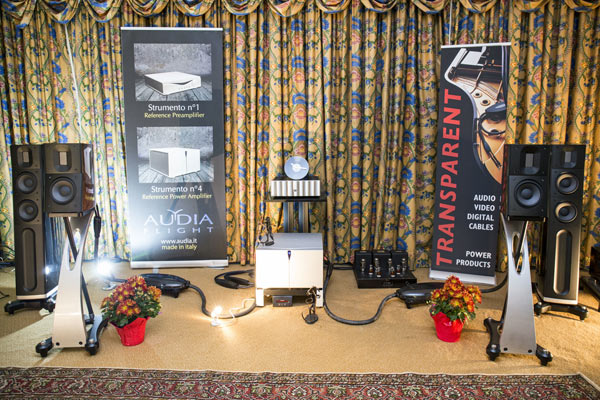
The Bergmann turntable/arm combos are made in Denmark, and, perhaps coincidentally, the speakers in the system were also Danish: the rather diminutive stand-mounted Raidho D1s. The sound was simply superb, making me think that the Raidho D1 is probably the best speaker of its size that I've heard. Alas, a pair of Raidho D1s will set you back $28,000.

In a less exalted price range than the TechDAS Air Force One and the Bergmann turntables was the new TD-209 from Thorens ($1499). Love that red!

Tash Goka, who, along with his wife, Diane Koebel (respectively, right and left in the photo), handles Canadian distribution of Copland, Antique Sound Lab, and various accessories, is also a speaker designer, being responsible for the revamping of the Reference 3A line. The top of this line, seen in the photo, is the very fine-sounding Nefes ($10,000/pair). Also making its debut at TAVES was the Copland CTA405-A integrated amplifier ($5990). This is a tube-based unit, which uses KT120s rather than the KT88s used previously. Tash told me that KT120s draw greater current than KT88s, which required a new, higher-capacity transformer. I've been thinking of swapping the KT88s in my McIntosh MC250 for KT120s—which, some people have told me should be OK—but was somehow reluctant to do so. Based on what Tash told me, my reluctance was justified. Thanks, Tash!

The Gershman Black Swan loudspeaker ($45,000/pair) has been around for a number of years (the earliest reference I could find to it in Stereophile was June, 2006), but it continues to evolve. According to Ofra Gershman (on the right in the photo, with her husband Eli, the designer of the speakers, on the left), there have been some recent changes in the drivers and associated tweaking of the crossover. A brief listen suggested that these are the best-sounding Black Swans so far.

One of the ways you can tell that you're in a room that is demming Joseph Audio speakers is that the speakers are set up diagonally rather than parallel to any wall. (Of course, you could also look at the brand name on the speaker, but that's cheating.) This worked well for the Joseph Audio Pearl 3s ($31,500/pair) driven by an Accustic Arts integrated amplifier ($6900) at TAVES. Jeff Joseph played an LP called Essential Elvis, which had a previously unreleased cut of "There Will Be Peace in the Valley." I have never been a real Elvis fan, but listening to this beautifully sung, deeply felt performance pretty well turned me into one.

Nordost had some new products at TAVES, and, as is their usual practice, did A/B comparisons to demonstrate their effectiveness. (Ariel Bitran reported on one of these demos here) The demo I attended compared the original Valhalla 1 speaker cable with the new Valhalla 2, playing the same piece of music, keeping everything (including volume) the same, just switching cables. The comparison was actually A/B/A, with "A" being Valhalla 1. The Valhalla 1 is my reference speaker cable, so I'm pretty familiar with its sonic characteristics, among which I would include superb clarity and transparency. However, switching from Valhalla 1 to Valhalla 2, and, especially, switching back to Valhalla 1, made Valhalla 1 seem almost muffled, Valhalla 2 revealing fine detain that was only suggested by Valhalla 1.
What's the cost of this improvement? Don't ask . . . I did ask, and was told that the 4m demo length pair of Valhalla 1 costs $12,200 and Valhalla 2 of the same length is $17,850!
Source : stereophile[dot]com


